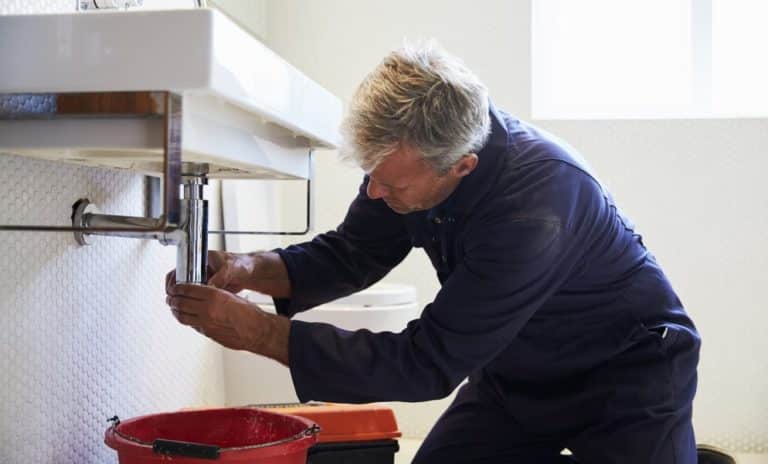
When it comes to maintaining a household, few things are as universally challenging and annoying as plumbing issues, especially when dealing with a leaky faucet. Not only does the constant dripping sound become a source of irritation, but it can also lead to increased water bills and potential water damage. Understanding plumbing basics and how to address a leaky faucet can save homeowners time, money, and stress.
Understanding Plumbing Fundamentals
Understanding the fundamentals of plumbing is crucial for homeowners who want to tackle basic repairs or better understand the system within their homes. At its most basic, plumbing consists of two primary systems: the supply side, which brings fresh water into your home, and the drainage side, which removes wastewater. The freshwater side is pressurized to allow water to flow upwards to every home floor, enabling it to come out of fixtures like faucets and showerheads. At the same time, the drainage system relies on gravity to move wastewater along. Knowing the distinction between these two systems and how they function can help homeowners identify the source of common problems like leaks or low water pressure.
Moreover, plumbing also involves various types of pipes and fittings, each with specific uses and applications. For example, copper pipes are commonly used for water supply lines due to their durability and reliability, while PVC pipes are favored for drain lines and venting. Understanding the materials and components of your home’s plumbing system can be invaluable when diagnosing issues or planning upgrades. Familiarity with the essential tools used in plumbing repairs, such as wrenches, pliers, and pipe cutters, can also empower homeowners to perform simple fixes, like tightening a loose fitting or replacing a worn washer, thereby preventing minor issues from escalating into major problems.
The Common Culprit: Leaky Faucets
A leaky faucet is more than just a nuisance; it’s a symptom of an underlying issue that needs attention. Several factors can cause faucets to leak, including worn-out washers or O-rings, corrosion, improper faucet installation, or a malfunctioning valve seat. Identifying the cause is the first step in fixing the leak.
Step-by-Step Guide to Fixing a Leaky Faucet
Identify the Type of Faucet: The repair process varies depending on whether you have a compression faucet, which has two handles for hot and cold water, or a ball, disc, or cartridge faucet, which typically has a single handle.
Turn Off the Water Supply: Before attempting any repairs, ensure the water supply to the faucet is turned off. It usually involves closing the valve under the sink or, if possible, shutting off the main water supply to your home.
Disassemble the Faucet: Carefully remove the handle and other parts. It is where having a basic understanding of plumbing comes in handy. Taking pictures or notes during disassembly can help ensure everything returns to its proper place.
Inspect the Parts: Look for wear or damage on the washers, O-rings, and valve seat. These are often the culprits behind a leak.
Replace Damaged Components: Replace any worn or damaged parts with new ones. Make sure to choose the correct size and type for your faucet.
Reassemble and Test: Once the faulty parts are replaced, reassemble the faucet and turn the water supply back on. Check for leaks and ensure the faucet operates smoothly.

Preventing Future Leaks
Prevention is always better than cure, especially in plumbing. Regular maintenance, such as cleaning your faucet’s aerator, checking for signs of wear on washers and O-rings, and avoiding harsh chemicals that can corrode faucet components, can extend the life of your fixtures and prevent leaks.
Additionally, being mindful of how you use your faucets can make a difference. Avoid turning the handles too tightly, as this can accelerate the wear and tear on the components that seal the valve.
When to Call a Professional
Sometimes, it’s best to call in a professional if you’re facing a complex plumbing issue or if fixing a leaky faucet has gone beyond replacing a washer or O-ring; professional help may be needed.
This is where Manassas Plumbing Pros come into the picture. Offering a wide range of plumbing services, from fixing leaky faucets to more complex plumbing issues, their experienced professionals are ready to provide fast, reliable, and efficient solutions tailored to your needs. With our expertise, you can rest assured that your plumbing is in good hands.
Plumbing doesn’t have to be a mystery or a source of frustration. With a basic understanding of how your home’s plumbing works, mainly when fixing a leaky faucet, you can tackle many common issues independently. Remember, regular maintenance can prevent problems before they start, saving you time and money in the long run. However, when faced with a plumbing challenge beyond your capabilities, feel free to call in the professionals.
Empower yourself with this knowledge, and take the first step towards becoming more proactive about your home’s plumbing health. Whether fixing that annoying leaky faucet or ensuring your plumbing system is in top condition, understanding, and action can make all the difference.
Media Contact
Company Name: Manassas Plumbing Pros
Contact Person: Manassas Plumbing Pros Support
Email: Send Email
Phone: 703-940-9001
City: Manassas
State: VA
Country: United States
Website: https://plumbingprosdmv.com/manassas/
